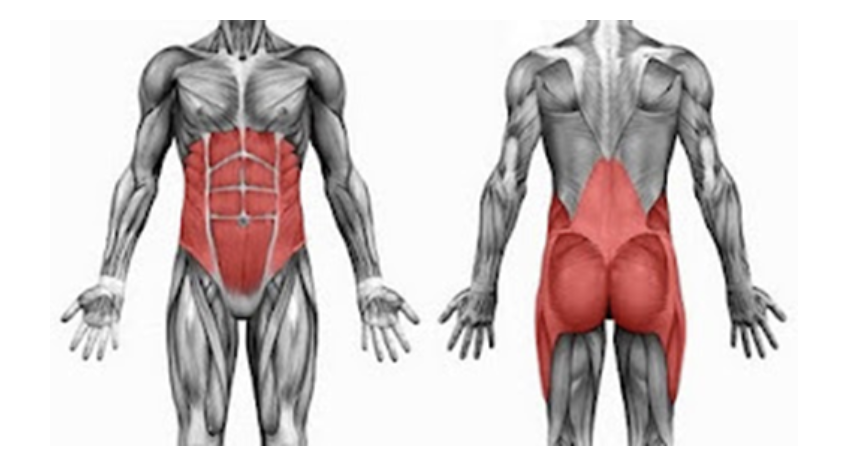Core Stability: Why It Matters
Your “core” is the foundation that keeps the body stable. It is a complex series of muscles extending beyond the abdominals to the entire trunk of the body. A strong core stabilizes your spine, allowing you to balance and dynamically change your movement. Physical therapists work with all patients to improve functional core stability to help prevent injury, maintain optimal alignment and posture, and avoid excessive stress on your joints.
What is the “Core”?
The core is comprised of muscles that extend the length of the torso including the abdominal muscles on your front and sides, the erector muscles of the back, and larger muscles that span multiple joints. When the core muscles contract, they stabilize the spine, pelvis, and shoulder, creating a solid support base from which you can stand, move, and shift weight.
Primary core muscles include:
Transverse Abdominis (TrA): The TrA is the deepest of all abdominal muscles, wrapping around the spine and around the front of the abdomen. It acts as a built-in girdle of the internal organs. It is located beneath the rectus abdominus (the “six pack” muscle). The TrA is crucial for spinal stability and managing pressure on the abdominal cavity. It is key to a healthier spine and lower back.
Rectus Abdominis: The rectus abdominis is known as the “abdominal muscle.” It is comprised of two parallel muscles that run vertically on each side of the abdomen, extending from the rib cage to the pubic bone. The rectus abdominis stabilizes and controls the tilt of the pelvis and plays an important function in breathing, labor, and elimination of the bladder and bowels.
Obliques: Both the internal and external obliques contribute to spinal stability. External oblique muscles extend on each side of the body’s trunk area from the lower ribs to the pelvis and cover the sides of the abdominal area. The external obliques help to rotate your trunk and support the rotation of the spine. The internal obliques play a role in flexing the spinal column, bending sideways, and rotating the trunk.
Erector Spinae: The erector spinae muscles are a group of muscle that extend along the entire length of the spine to the pelvis. These muscles support the spine, keeping it upright and stable and allowing the spine to extend and rotate.
What is core stability?
Core stability refers to the activation of your trunk muscles (hips-abdominals-pelvis) to create a stable base to support your body’s movement. Strong core muscles are better able to support and maintain proper body posture and position, responding efficiently to dynamic changes in movement.
A stable core means:
Ability to resist and adapt to changes in position due to external forces or deterioration in the body.
With a strong core, you make small corrections to stay upright when an external force is placed upon you. With a weak core, you have to make larger corrections to remain upright. When you have a strong core, you are able to detect changes in position and make corrections effectively and efficiently to stay upright and balanced.
Relieving stress on your spine and internal stability tissues (ligaments, intervertebral discs, and cartilage between joints) which are loaded to maintain an upright position without strong core muscles. Muscles can be loaded to adapt to various forces to remain upright and heal quickly. Using your core muscles to stay upright prevents unnecessary loading on your internal tissues that could cause injury.
Core stability is vital for supporting your body and helping you avoid injury when moving. Your physical therapist can assess your core stability and design a core stabilization exercise program to enhance the strength, endurance, and control of your core muscles. There are various levels of core strengthening exercises through which your therapist will progress you based upon your baseline core function.
Physical therapists help you properly strengthen core muscles based upon the functional stability you need for various activities. For example, a thirty-second plank trains the core to be stable during a high-intensity, short duration activity while engaging in upper body strengthening while standing on a balance trainer works your core muscles for low-loading, longer duration activities. Physical therapists incorporate core stabilization exercises into your treatment for a variety of conditions as the core’s stability and strength are foundational to your body’s optimal function.
